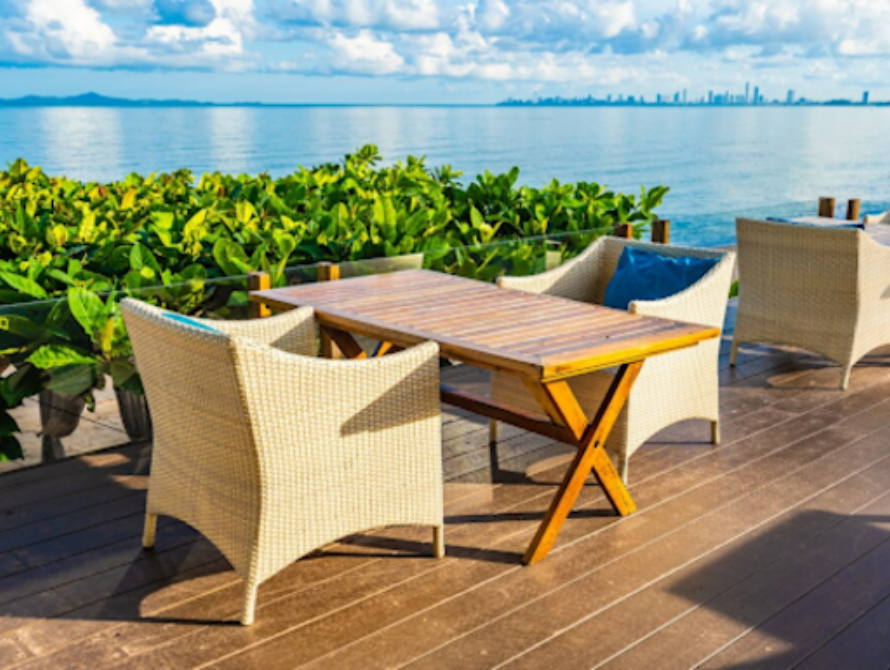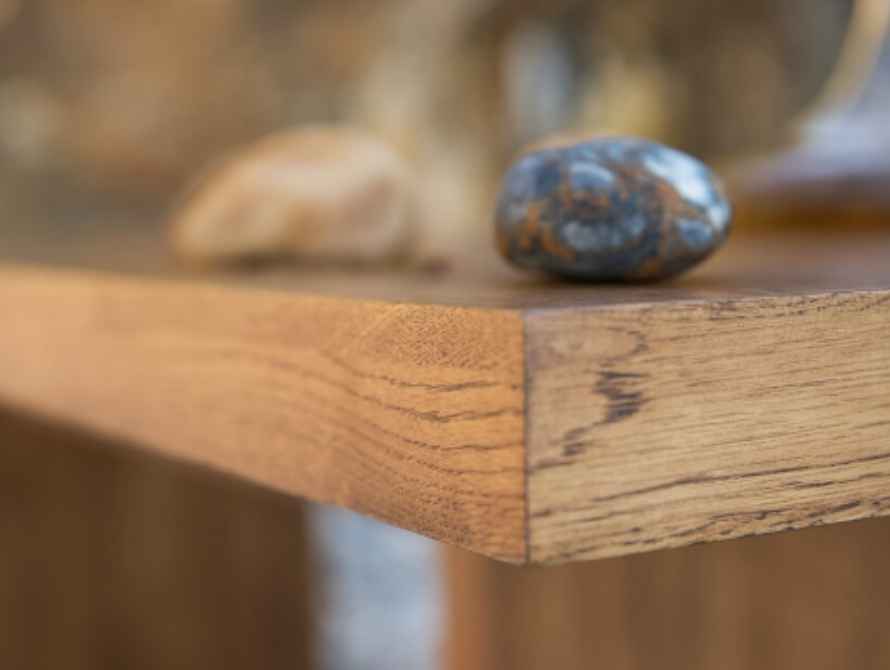Wood plastic composite vs. Traditional materials
In the age-old debate between tradition and innovation in construction materials, Wood plastic composite (WPC) and composite lumber have emerged as contenders challenging the supremacy of traditional wood. This clash of materials brings forth a narrative that delves into the unique properties, environmental considerations, and real-world applications of these contenders.
Traditionally, wood has held its ground as a construction staple, celebrated for its natural charm and versatility. However, the advent of wood plastic composite, a fusion of wood fibers, recycled plastics, and binding agents, has disrupted the scene. In the mix, composite lumber further adds to the complexity, offering a middle ground between the authenticity of wood and the cutting-edge features of WPC.
So, which is the best suitable option? It's all about your priorities! Durability, low maintenance, and eco-friendliness? Regardless of your choice, the goal is to create a space that reflects your style and brings joy.
1. Wood plastic composite (WPC) in construction and design

WPC's enduring appeal stands the test of time
With a compound annual growth rate (CAGR) of 12.4%, the global wood plastic composite market, estimated at USD 5920.3 million in 2021, is projected to grow to USD 13418.6 million by 2028.
The construction industry demonstrated a substantial demand for WPC, propelled by its adaptability, eco-friendliness, and resilience.
Builders and designers love it because it outlasts traditional materials by up to 20%. WPC often uses a blend of wood fiber and recycled plastics, and newer technologies are paving the way for even more sustainable plastics.
Find out details how WPC are made with: Wood plastic composite - the best solution for construction
While pine, oak, or teak might be natural, its unsustainable logging practices cast a shadow. WPC offers a greener alternative, without sacrificing performance or style.
No more endless sanding, staining, or replacing – just low-maintenance bliss. But it's not just about practicality. WPC comes in a rainbow of colors and textures, mimicking natural woodgrains or sporting sleek, modern finishes.
However, every coin has two sides. WPC's higher upfront cost might make traditional wood the budget-friendly hero.
2. Advantages of Wood plastic composite (WPC)
WPC found significant traction in North America and Europe, gaining popularity in various residential and commercial construction initiatives. Why is WPC decking making traditional wood sweat? Here's a closer look at its winning hand.

WPC stands firm against any weather elements
2.1. Durability and longevity
Forget annual staining and splintery surprises. WPC's secret weapon lies in the robust blend of wood's charm with HDPE-based or PVC-based plastic resilience, ensuring exceptional durability and a longer lifespan.
With a high impact resistance, it withstands daily wear and tear without losing its appeal.
This combination produces a material that resists rot, decay, and pests. WPC decking can outlast their wooden counterparts by 2-3 times, meaning more time for lounging and less time for lumberyard trips.
2.2. Low maintenance requirements
Say goodbye to constant upkeep, WPC demands minimal maintenance. Plastic binders and additives in composite lumber can resist rot, mold, and pests means more time enjoying, less time fixing.
Just the occasional soapy scrub keeps it looking fresh, saving you precious leisure hours for grilling, chilling, or mastering that perfect margarita recipe.
2.3. Environmentally friendly characteristics
While the plastic part might raise an eyebrow, WPC is making strides towards being a green choice. Many brands use recycled wood fibers and are exploring sustainable plastics, making it a responsible choice for the planet-conscious builder.
High-density polyethylene (HDPE) stands out as a prevalent plastic in the manufacturing of Wood Plastic Composites (WPCs). It originates from recycled post-consumer plastics, including items like milk jugs and detergent bottles.
Low-density polyethylene (LDPE), another polyethylene variant, finds application in WPCs. It is frequently sourced from recycled materials, contributing to the composite's flexibility.
Polyvinyl chloride (PVC), a versatile plastic extensively used in WPCs, is acknowledged. While its environmental friendliness may not match some alternatives, ongoing efforts focus on integrating recycled PVC or exploring more sustainable formulations.
Plus, less maintenance means less waste from painting and repairs, adding another green tick to the WPC decking.
2.4. Enhanced resistance to weather and insects
Come rain, shine, or hail, Wood plastic composite (WPC) stands unfazed. Unlike wood susceptible to nature's whims, say goodbye to the annual pressure washer struggle. Embrace a deck that preserves its elegant look year after year, resilient to both weather elements and pesky intruders.
Versatile and robust, WPC isn't confined to decking alone. Picture sleek, contemporary lines for your patio or a warm, rustic touch for your garden. WPC's adaptability extends beyond decking to fences, railings, and cladding, providing the same low-maintenance allure and modern aesthetic across various outdoor spaces.
In essence, WPC's durability, minimal upkeep, and eco-conscious features assert it as a formidable presence. Its continually expanding applications underscore that WPC isn't merely a passing trend – it's a transformative force in the realm of outdoor design.
3. Overview of traditional materials
Traditional building materials, such as timber and metal, have long served as foundational elements in construction. Timber, valued for its timeless aesthetic, is both lightweight and visually pleasing.
However, it is susceptible to rot and insect damage, requiring consistent upkeep. Conversely, metal, with its robust strength, boasts durability and fire resistance but is prone to corrosion.

WPC shrugs off wear and tear, while traditional wood yields to the slightest pressure.
3.1. Strengths and weaknesses
Timber's allure lies in its visual appeal, lightweight nature, and insulation properties. Yet, it necessitates meticulous care to resist wear and tear. On the other hand, metal impresses with its exceptional strength but demands protective measures against corrosion, which adds to its overall weight.
Wood:
- Strengths: Aesthetically pleasing, lightweight, and relatively easy to work with. Wood also possesses good insulation properties.
- Weaknesses: Susceptible to rot, insects, and fire. It can warp or crack over time, requiring diligent maintenance.
Metal:
- Strengths: Exceptional strength and durability, resistant to pests and rot. Metals offer high load-bearing capacities and are fire-resistant.
- Weaknesses: Prone to corrosion, heavyweight, and may require specialized tools for manipulation.
3.2. Maintenance considerations
Wood: Regular maintenance is crucial to preserve its integrity. Periodic sealing or painting helps protect against moisture, pests, and the natural wear and tear that accompanies exposure to the elements.
Metal: To combat corrosion, especially in outdoor settings, routine inspections and protective coatings are necessary. Rust can compromise structural integrity if left unchecked.
3.3. Environmental impact
Wood, if sourced sustainably, is considered eco-friendly, but extensive logging raises concerns. However, the sourcing of wood can contribute to deforestation if not managed sustainably.
Metal extraction and processing contribute significantly to environmental footprints, posing challenges for sustainability. Mining activities and energy-intensive manufacturing processes contribute to resource depletion and emissions.
Professionals emphasize the importance of balancing aesthetics with functionality. While wood provides a warm aesthetic, combining it strategically with metal's strength can create resilient structures. Sustainable practices, like certified wood sourcing and recycling metal, align with the industry's push for environmentally conscious construction.
In assessing the advantages and drawbacks of traditional materials, it is evident that they offer proven reliability but come with challenges affecting both maintenance efforts and the environment.
This is where Wood Plastic Composite (WPC) emerges – a material that seeks to amalgamate the best attributes of both worlds, delivering durability and sustainability in a unified package.
4. Comparative overview
|
Properties
|
Wood plastic composite (WPC)
|
Traditional Materials (Wood & Metal)
|
Cost analysis
|
Economical due to recycled materials and lower maintenance costs.
|
Variable costs with initial investment and ongoing maintenance expenses.
|
Environmental sustainability
|
Sourced from recycled materials, reducing environmental impact.
|
Wood may contribute to deforestation, while metal extraction and processing have environmental implications.
|
Customization & flexible design
|
Highly versatile, allowing for diverse designs and easy customization.
|
Limited design flexibility in traditional materials, especially metal.
|
Real-world applications
|
Widely used in decking, cladding, and outdoor structures. Resistant to weather and insects.
|
Commonly used but may require more maintenance; wood can deteriorate, and metal may corrode.
|
When it comes to cost, Wood plastic composite (WPC) takes the lead. Thanks to recycled materials and lower maintenance costs, it's budget-friendly without compromising quality. Plus, its eco-friendly tag isn't just a marketing gimmick. Made from recycled stuff, WPC is a nod to sustainability, reducing our carbon footprint.
But it's not just about being kind to the wallet and the environment; WPC is a design maestro. Unlike traditional materials, especially metal, it bends to your creative will. That's a big plus in the aesthetics game.

WPC's modern aesthetic elevates space with sleek lines and endless possibilities
Traditional materials may have their place, but they often demand more attention, especially wood with its penchant for decay and metal with its rust issues. In the real world, WPC shines in outdoor structures. It stands tall against the elements and insects, showing its durability muscle.
WPC decking has become increasingly popular in residential and commercial settings. Homeowners and businesses benefit from long-lasting, low-maintenance decks that retain their aesthetic appeal over the years. Unlike traditional wood, WPC decking doesn't succumb to decay or require frequent refinishing.
Patio furniture and garden fixtures made from WPC have gained popularity. They offer the natural look of wood with enhanced durability.
Outdoor furniture made with WPC stands up to rain, sun exposure, and pests without deteriorating or requiring frequent upkeep. This results in longer-lasting, aesthetically pleasing outdoor furnishings.
If you're seeking a cost-effective, environmentally friendly, and stylish solution, Recycled wood plastic composite emerges as a reliable companion on your construction journey.
5. Conclusion
Concluding the exploration of WPC, let's revisit its advantages. Wood Plastic Composite (WPC) is not just a material; it stands as a project's reliable companion. It proves to be cost-effective, environmentally friendly, and a design innovator – suitable for decking and cladding. Eurostark emerges as a notable player, offering premium WPC solutions accessible through Eurostark's website.
Now, let's shift from the theoretical to the practical. Your project deserves more than a mere material; it demands a thoughtful companion. WPC emerges as a triple threat – delivering affordability, sustainability, and style. Comprehend your project's unique needs and choose wisely, and your project will express its gratitude in the long run.